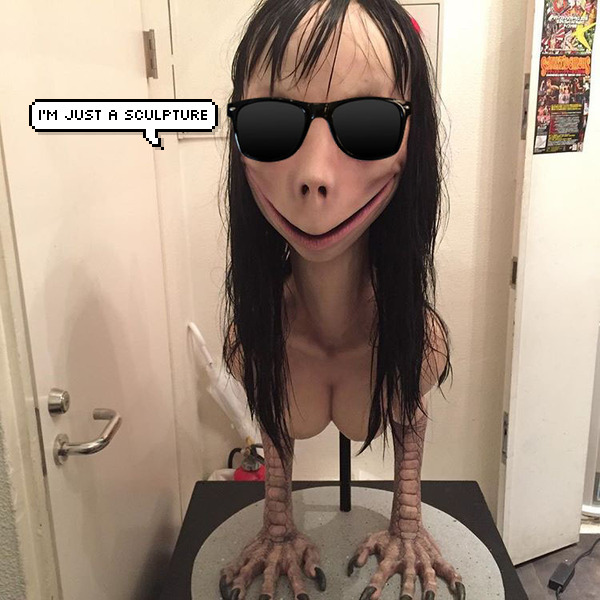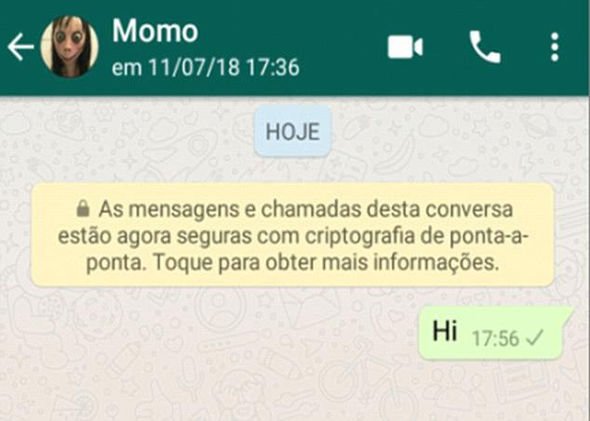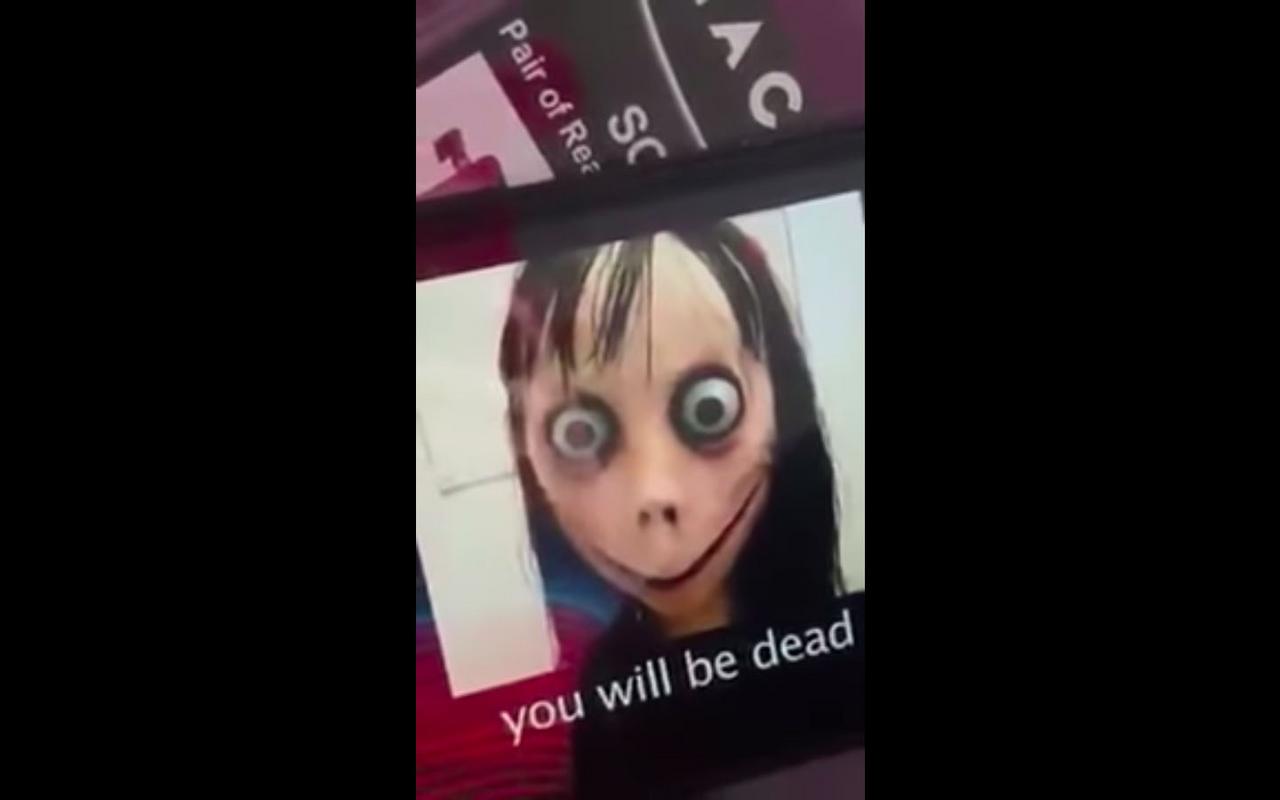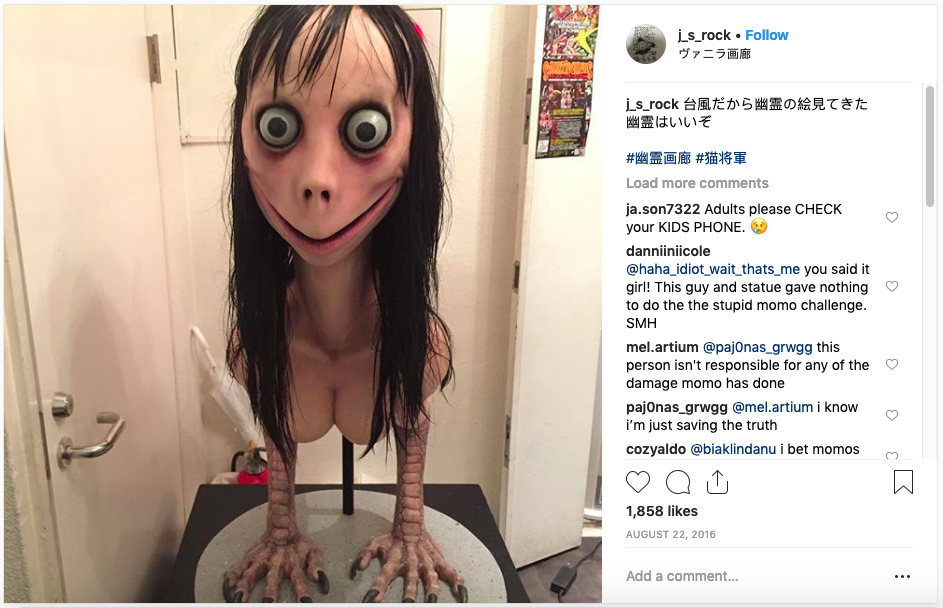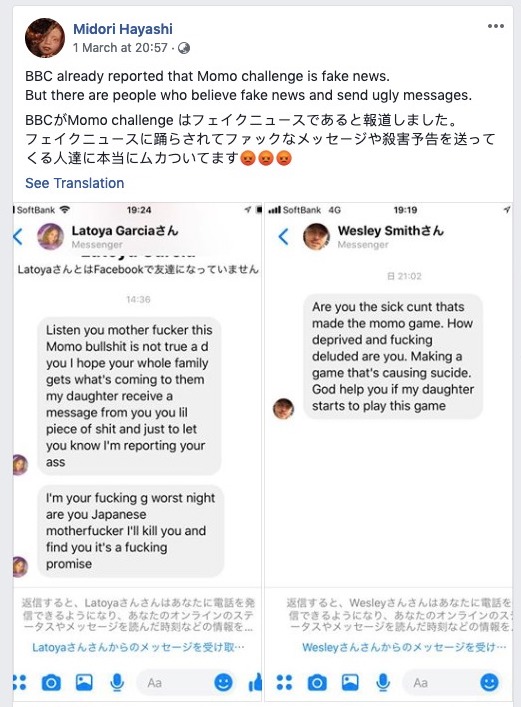Stop Panicking, The 'Momo Challenge' Is Just A Hoax
If anything, it's a cyberbullying tactic.
Let's cut straight to the chase: the "Momo Challenge" is not real.
It's a viral hoax that was created to scare people and cause mass hysteria - and it's working.
The "Momo Challenge" is an urban legend - it's not real, but it exists in a way because people who freak out about it make it real.
The challenge had its origins on WhatsApp, where people - usually teens and children - are told to write to or contact "Momo", reported Heavy.
1. It works in a similar way as chain messages, using "threats" of violence and harm that will scare impressionable teens and children into doing things
Once a person contacts "Momo", they may be challenged to do something. If they fail to complete the challenge, "Momo" will then threaten the user.
These threats consist of appearances at night, release of personal information, or harm to their family members and friends. "Momo" may also send the user disturbing and graphic images.
Under these threats, the teen or child may feel forced to commit dangerous tasks in order to appease "Momo".
In short: it's a cyberbullying tactic.
2. Though the "hype" around the alleged challenge died last year, it has now resurfaced again on YouTube
Parents - particularly in United Kingdom - have claimed that "Momo" randomly appears in videos of popular cartoon Peppa Pig and online video game Fortnite.
The image, which pops up midway through a video, appears with text that says "Momo" will come and kill the viewer.
However, YouTube has said that it has "seen no recent evidence of videos promoting the Momo Challenge" on its platform.
Heavy reported that the videos that are now popping up with "Momo" in them are likely made by trolls looking to take advantage of the hype.
3. The terrifying bird-woman hybrid photo is really just a good special effects prop
BBC Brazil reported that the image of "Momo" is actually a sculpture made by a Japanese company, "The Link Factory".
In 2016, the birdwoman was displayed as part of a ghosts and spectres exhibition at an art gallery in Ginza, Tokyo.
Japanese artists Midori Hayashi has been incorrectly linked as the creator of the statue, which has led to her receiving death threats.
4. To date, there has been no definitive evidence that the "challenge" has caused any deaths
The "challenge" has been linked to at least five suicide cases in Argentina, India, and Colombia, and an unverified claim of 130 suicide cases in Russia.
However, there is no definitive evidence linking those cases to the "Momo Challenge", reported Snopes.
5. Spreading more fake news and panic about the "challenge" is only making the situation worse
Charities and experts in UK have slammed the widespread coverage of the hoax.
A spokesperson for UK-based suicide hotline Samaritans told The Guardian, "These stories being highly publicised and starting a panic means vulnerable people get to know about it and that creates a risk."
As a parent or concerned adult, here's what should be done instead:
- Educate your children about Internet safety.
- Remember that not everything on the Internet is true.
- Be aware of the content being consumed by your children and the people they talk to.
- If you see harmful or dangerous challenges on YouTube, report it.
